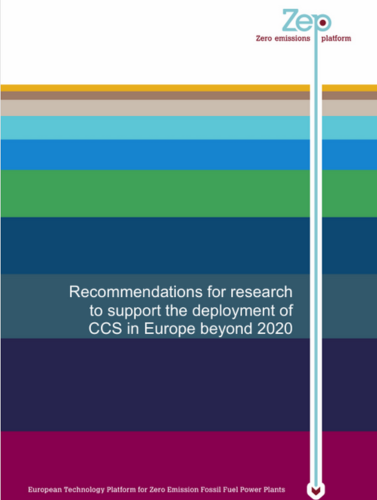Recommendations for research to support the deployment of CCS in Europe beyond 2020
About the report
The European Union (EU) is now leading the world in the implementation of an ambitious demonstration programme for CO2 Capture and Storage (CCS) as a critical technology for combating climate change. The goal: to ensure CCS is commercially viable by 2020. But while individual components of the CCS value chain are already proven – ready for scale-up and integration – further R&D into next-generation technologies must also be initiated immediately to enable rapid and wide deployment post-2020. This report outlines key areas for improvement, together with the main strands for R&D to 2030 and beyond.
Executive summary
Experts within the European Technology Platform for Zero Emission Fossil Fuel Power Plants (ZEP) have identified key areas for improvement for research to support the deployment of CCS in Europe beyond 2020, together with the main strands for R&D to 2030 and beyond.
To ensure maximum effectiveness, this should be coordinated at national and EU level and include key
learnings from the EU demonstration programme. Technologies still at an early stage should also be included since sudden technology breakthroughs cannot be foreseen, but are the outcome of dedicated R&D.
- Second-generation CCS technologies (2020-2030): technologies brought to commercialisation within this period are likely to be based on improvements and refinements of first-generation technologies employed pre-2020. Some new technologies, currently in the R&D phase, should reach the demonstration or even commercial phase.
- Third-generation CCS technologies (post-2030): technologies brought to commercialisation within this period are likely to be based on optimised and refined first- and second-generation technologies. In particular, demonstration phase, second-generation technologies should become commercialised. New technologies, which today could be in R&D infancy, should reach the demonstration phase and then become commercially available.
CO2 capture
R&D activities for CO2 capture should focus on improving and developing new and competitive capture technologies to reduce cost and energy consumption, including:
- Undertaking further R&D on the current portfolio of capture technologies – post-combustion, pre-combustion and oxy-fuel – and identify improvements in those closest to commercial maturity. Investigating novel technologies and the novel use of known technologies.
- For all technologies, identifying additional areas of improvement in reliability, availability, maintainability, and flexibility (e.g,. in terms of fuel or operation).
CO2 transportation and storage
R&D activities for CO2 transportation and storage should focus on enhancing technologies and methodologies expected to facilitate wide-scale deployment, including:
- Developing a complete transportation infrastructure, including industrial sources of CO2.
- Improving methodologies for assessing storage options and their capacities.
- Optimising storage capacity and efficiency.
